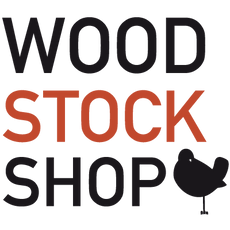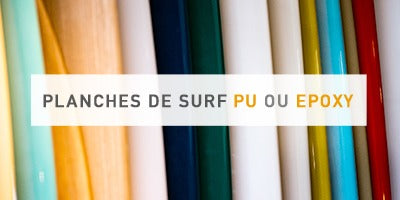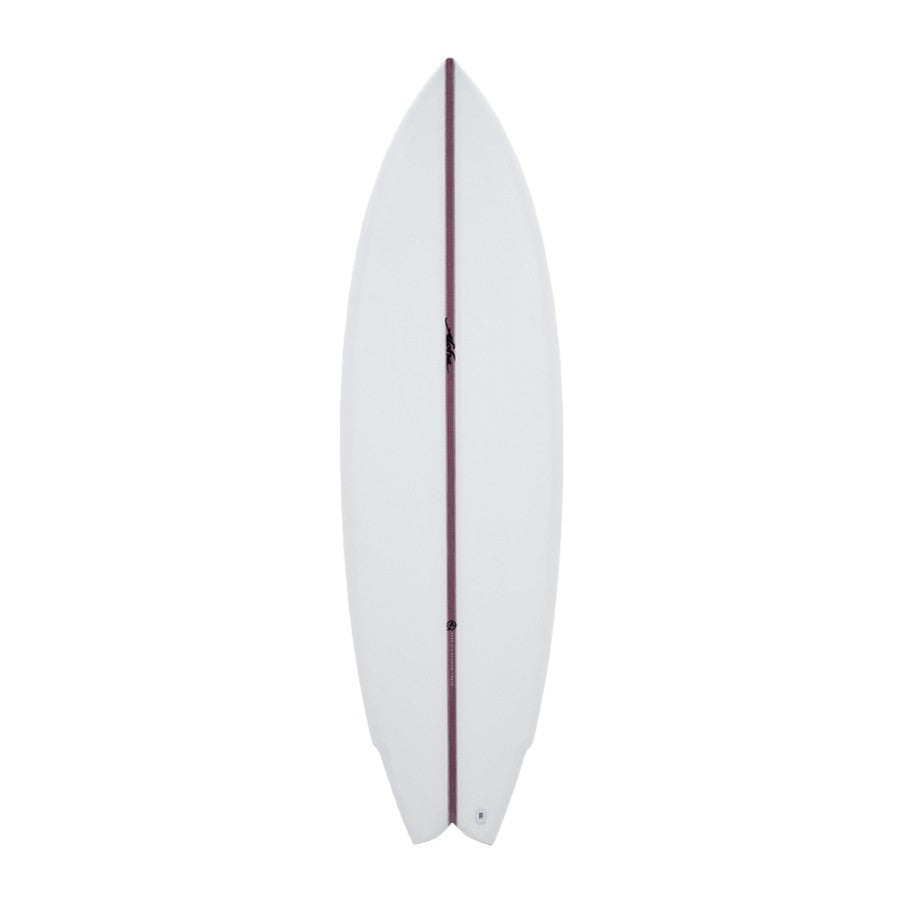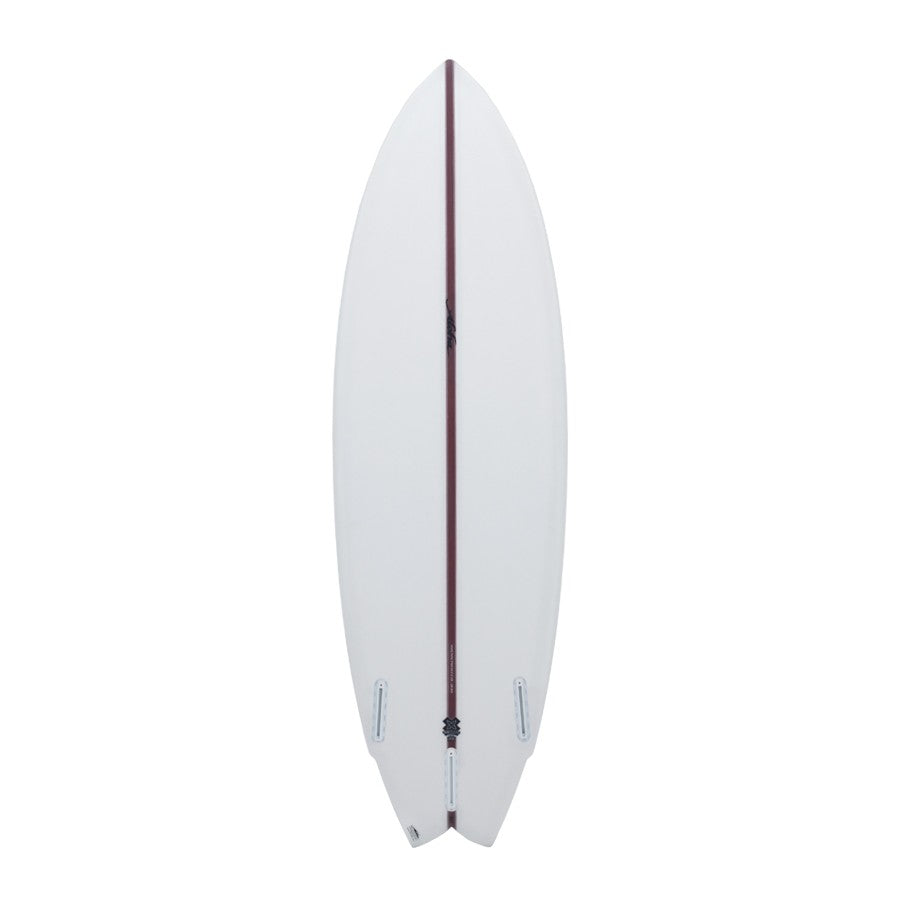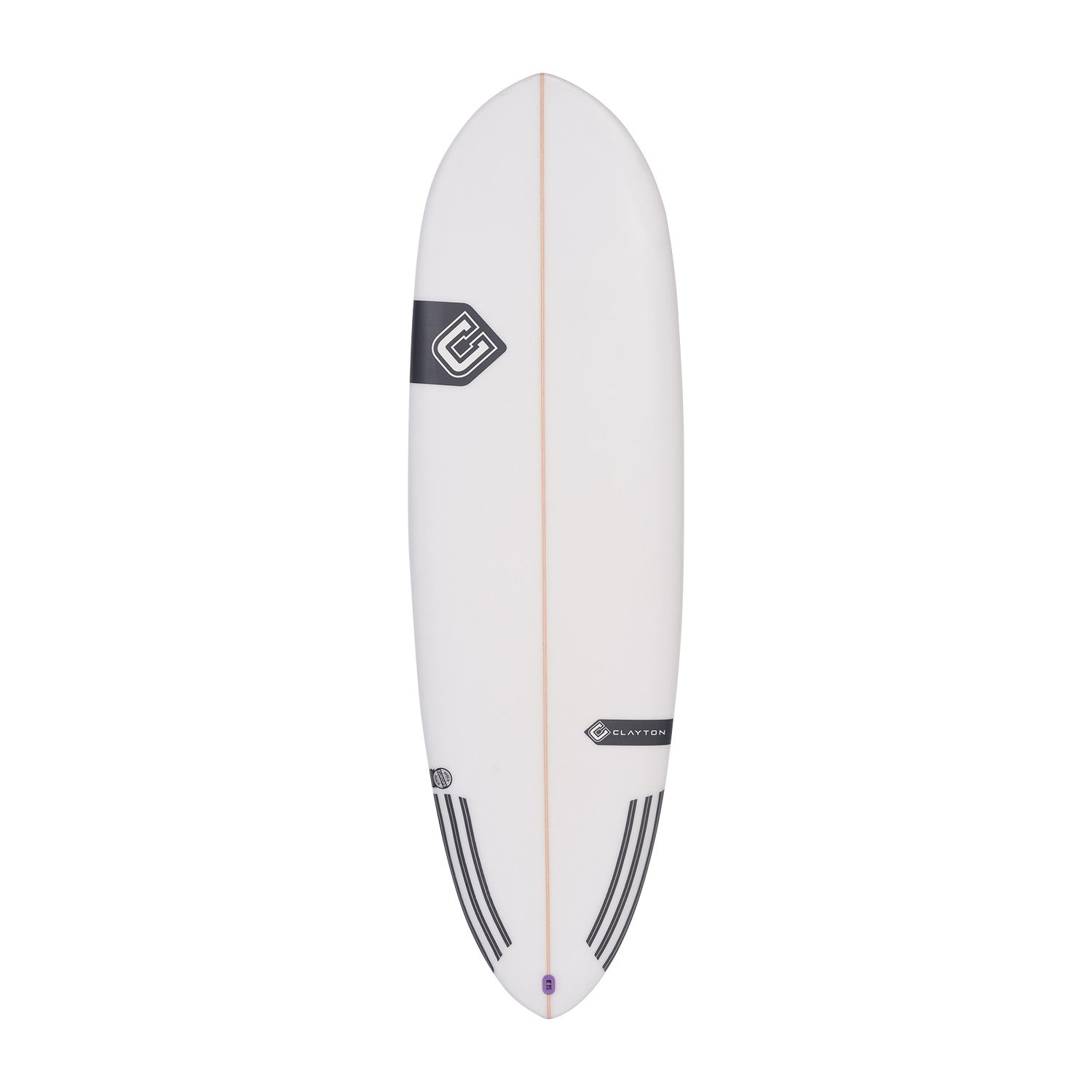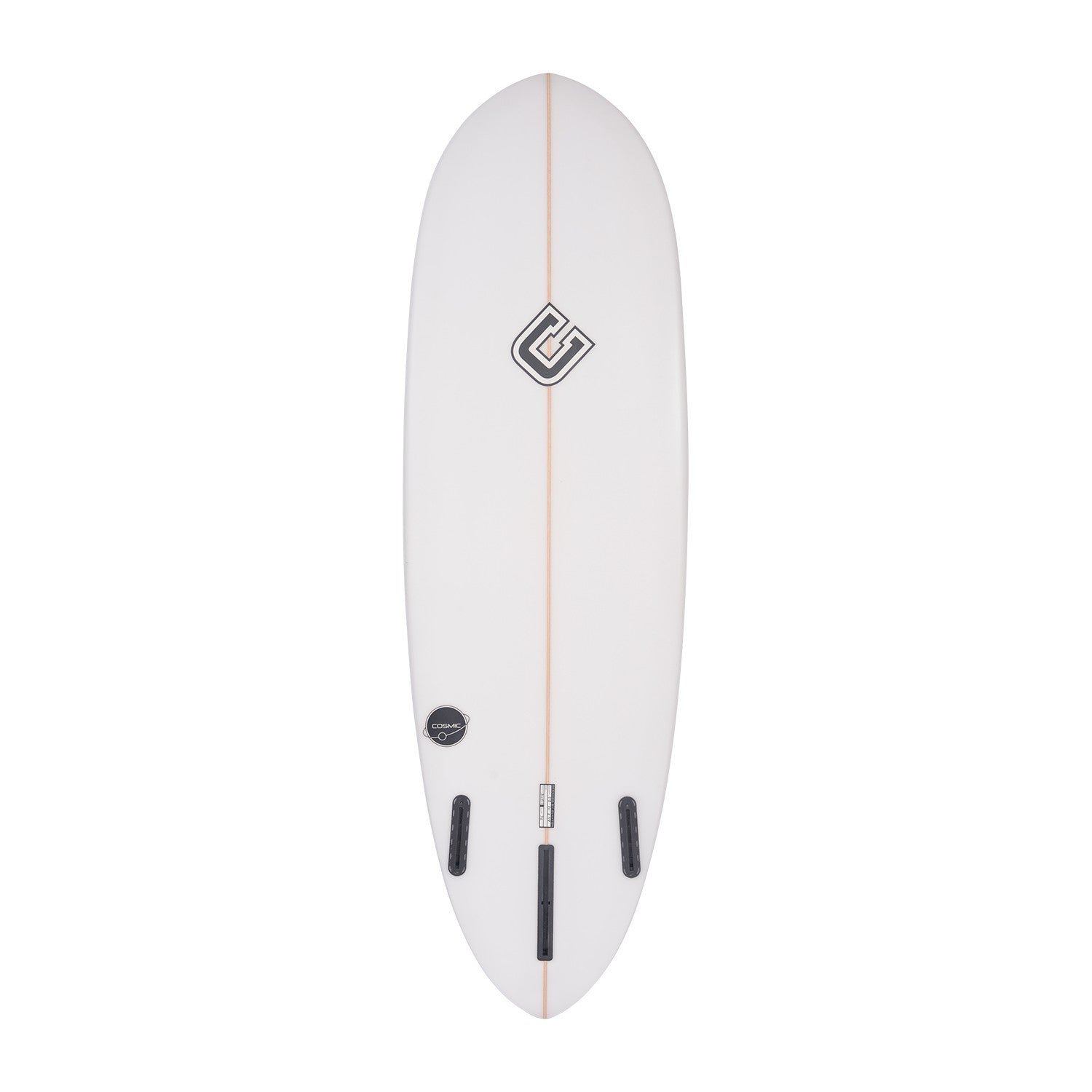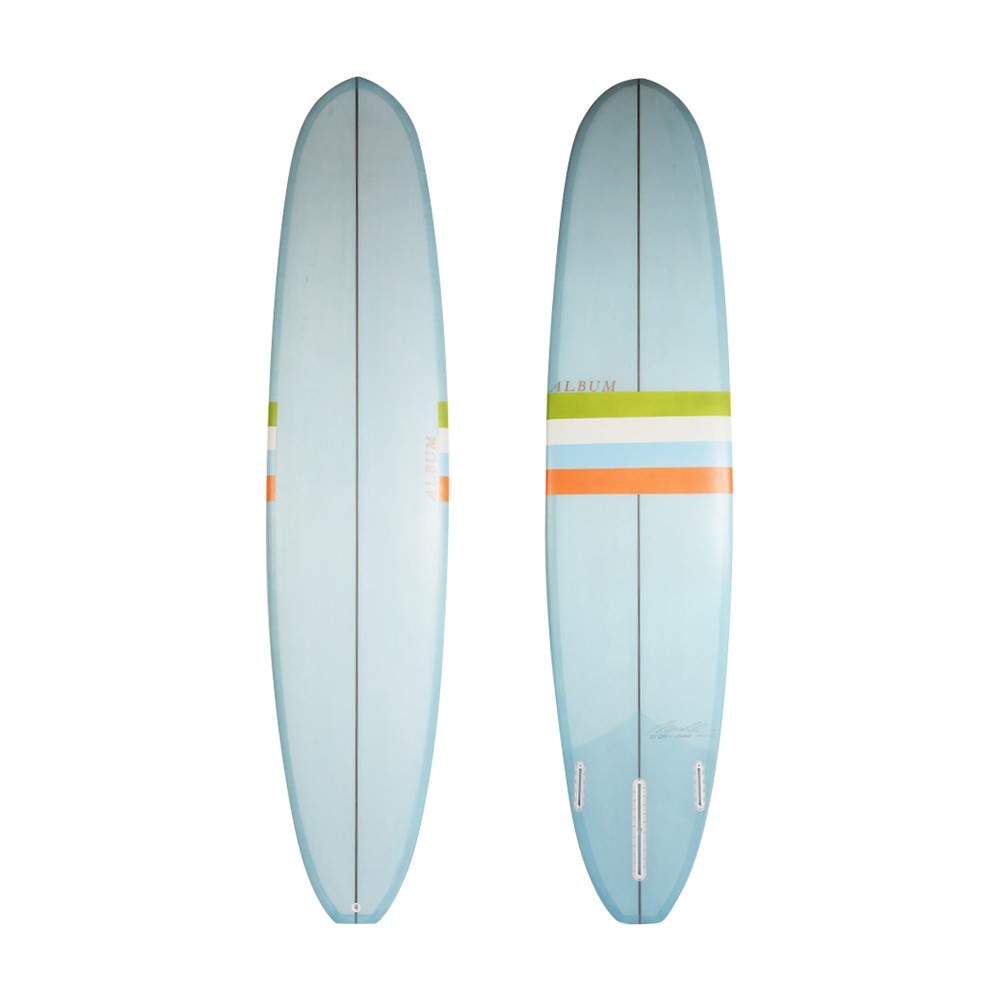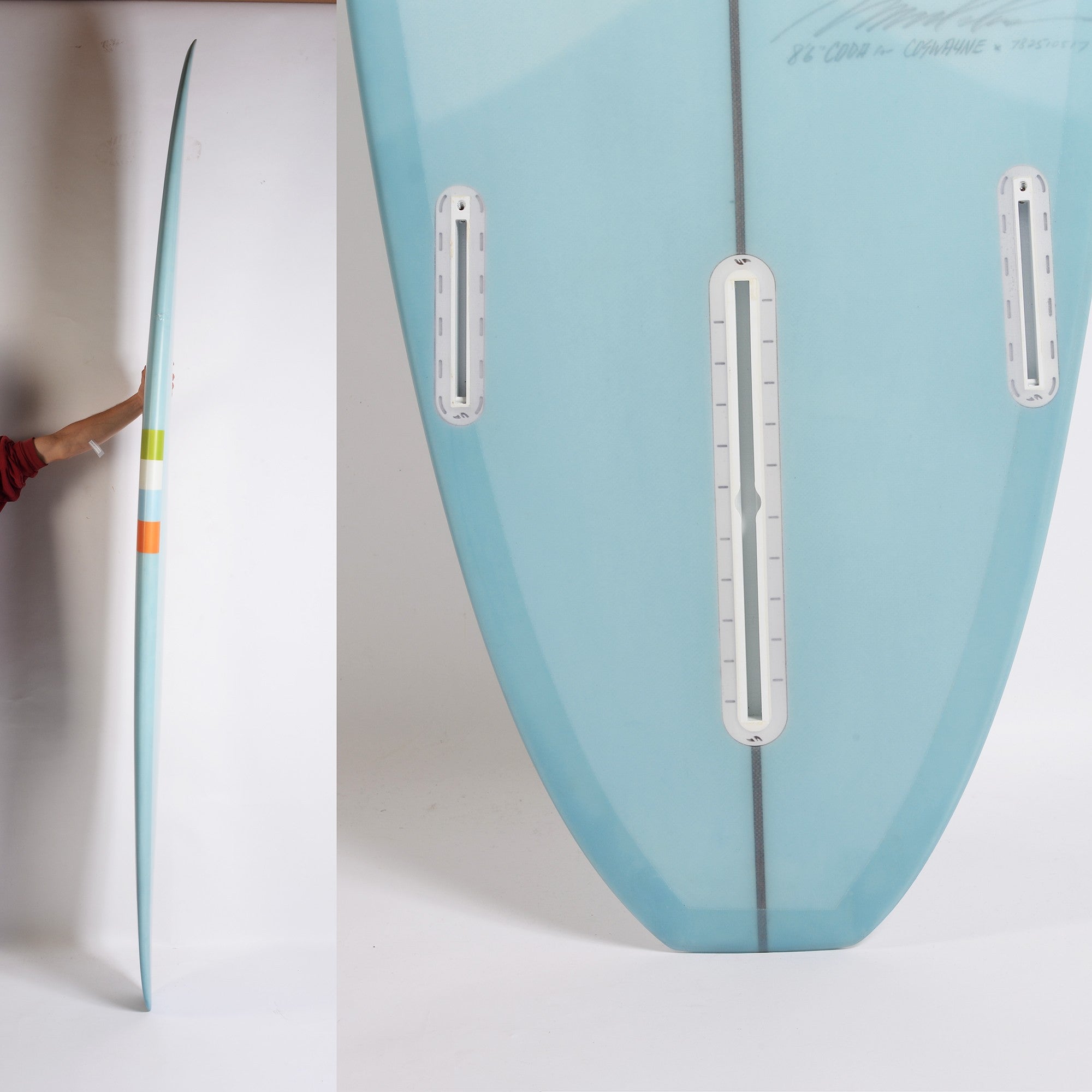Have you already asked yourself this question or perhaps before going to the surf shop to choose a board you will ask yourself the eternal question ... PU/Polyester or EPS/Epoxy ? How to choose? What are the differences? At Woodstockshop.com we explain:
PU (Polyurethane) board with Polyester resin:
This material is the most used for the manufacture of surfboards , the best known of all, the simple and effective method since the 60's , also the most requested among Pro surfers who always appreciate its reliability and the sensations of PU . The PU board is made with a polyurethane (PU) foam block , laminated by a fiberglass fabric with Polyester resin. It is the most classic and widespread manufacturing method in the world. The foam bar generally has a central wooden stringer to reinforce the strength of the board and have a well-distributed flex. The layer of Polyester-based resin is applied above (two layers) and below (one layer) to solidify the board and make it perfectly waterproof . With or without decoration, with or without color, with 1 or more wooden stringers , the options are endless and the strength of the board will generally depend on the thickness of the glass (fiberglass + resin). A high-performance board will be “light” glassed to remain manageable and light (pros use light boards for their high-performance shortboards, for example). A “retro” board or a “retro” longboard will be thicker glassed for more durability and inertia.
Benefits:
- This construction is often less expensive , it is easily found in surf shops (or from shapers for custom boards) and the choice of boards and manufacturers and/or shapers is very wide.
- Easier to repair (yourself with a little resin in a tube or from a shaper or repairer)
- Easier to have a custom board made in PU or with special options.
- Its construction and resin allow it to better manage choppy conditions and bounce less in chop because these boards absorb vibrations better . This is the general opinion of surfers, whatever their level. Its reactions are predictable and a PU board will generally be more tolerant for surfing, absorbing shocks and surfing more smoothly than EPS/Epoxy boards which are known to be stiffer and less tolerant. Its flex is also superior to that of an EPS/Epoxy board and is popular with pro surfers because it offers finesse and a pleasant board feel.
- Often considered more "noble" because it is the traditional construction since the 60's and it is often used by shapers for high-end or custom or retro boards in tinted resin . Simple materials that have stood the test of time over decades!
Disadvantages:
- A shorter lifespan because it is a little more fragile than EPS/Epoxy boards. Can score more easily and quickly on the deck of the board.
- A little heavier and floats a little less at equal volume because PU foam blocks float less than EPS foam blocks.
- Less nervous , especially in small waves
Our opinion: PU is ideal for good surfers wanting to keep a traditional feeling under their feet, for big waves, for "retro" boards or "retro" longboards , for custom boards with options or particular shapes.
Find our PU boards at the brands Clayton, Almond Surfboards, Stewart, Album etc. They can be offered with or without decoration , with or without tinted resin (color & pigment in the resin) . Contact us by email or tel for more information and advice!
EPS board (Expanded Polystyrene) with Epoxy resin:
It is an increasingly popular material for many brands or with surfers because it is often more resistant over time (less dents on the top of the board in particular) which makes it a popular construction for surfers (i.e. beginners concerned about not damaging their board, or careless surfers concerned about keeping their board longer!). One of the biggest differences is the weight. In fact, the EPS/Epoxy combination is lighter than a PU/Polyester board. It is also a more solid material and floats more (expanded polystyrene 'EPS' floats very well). An EPS/Epoxy board will be more responsive , allow you to turn more quickly and carry out maneuvers with nervousness. EPS/Epoxy has better flotation at equal volume compared to the PU of more traditional boards and can be advantageous for quickly gaining speed. A very good option for small waves because you float well and go quickly. However, EPS/Epoxy is less tolerant of choppy waters and is not always well suited to difficult conditions. It can give the impression of floating a lot and bounce in the chop due to its stiffness, which is what is often criticized for this type of board. An EPS/Epoxy board can be recycled and/or manufactured in a “cleaner” way than a PU/Polyester board, providing a reduced environmental impact for surfers and a more “sustainable” surfboard for manufacturers. .
Benefits:
- Light and nervous
- More “Durable” or clean in terms of manufacturing
- Floats better
- Often ideal in small, smooth waves
Disadvantages:
- More expensive
- “Stiffer” in terms of sensations
- Less tolerant in chop or difficult waves
- May turn yellow when the board is exposed to UV rays from the sun (for translucent models without color)
- Often requires a reinforcing bi-axial fiber fabric or carbon or balsa rails to make the EPS foam bar less brittle
- Less popular in big waves or among professional surfers wanting to have a docile board with predictable reactions
- Less "noble" because EPS is more difficult to work with for shapers offering custom boards and does not have the same properties as PU (Polyurethane). EPS is in fact more brittle and less pleasant to shape by hand than PU blocks, its polystyrene feel cannot be worked as easily as polyurethane (PU). It is rarely used for “retro” boards in tinted resin, for example.
Our opinion:
EPS/Epoxy boards will often be ideal in small waves, in rather smooth waves without chop, also ideal for surfers keen not to damage the deck of their board too much, for surfers who want to float more (and therefore row more easily), for lovers of more innovative technologies too (carbon rails, balsa rails, bi-axial fibers, vacuum-applied resin, carbon fabrics, EPS sandwich construction etc.) and for lovers of more rigid and nervous boards.
Find some of our EPS/Epoxy boards from the Victory, Aloha and Elemnt brands in particular. Contact us by email or tel for more information and advice!
In conclusion: Some surfers swear by EPS/Epoxy boards, others prefer PU/Polyester boards, it's a question of feeling, but also of practice, waves surfed, conditions, experience. You have to adapt your equipment and test it to get an idea and know what you like best and in what types of conditions.

Photo: PU foam blocks from the American manufacturer Millennium Blanks
Millennium Blanks
